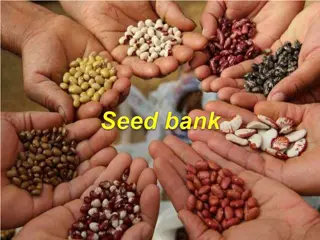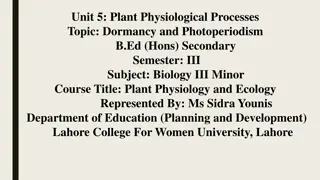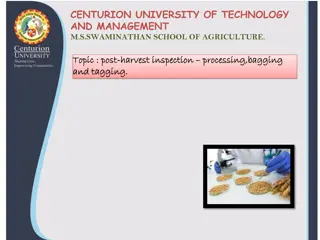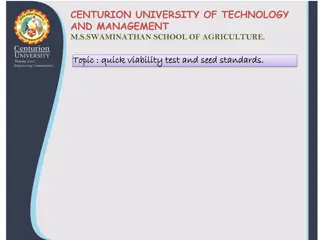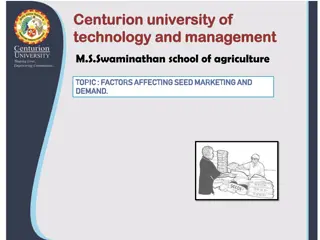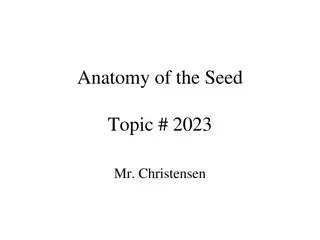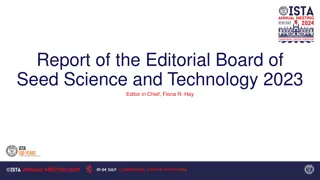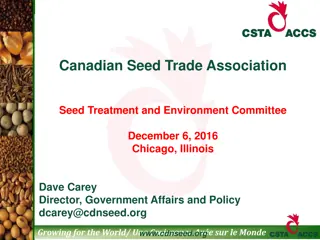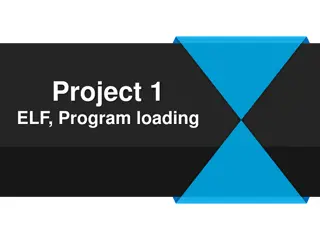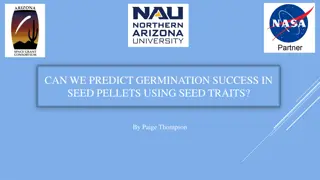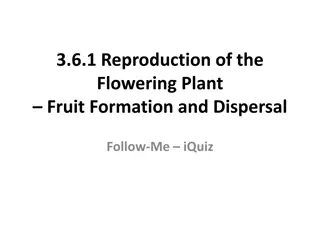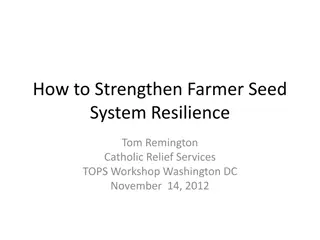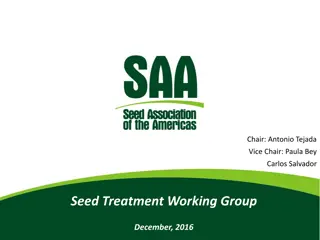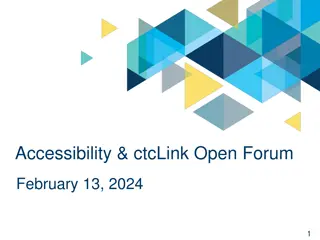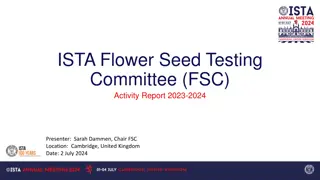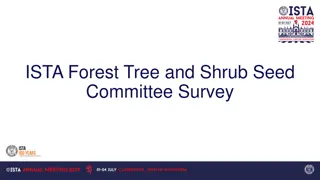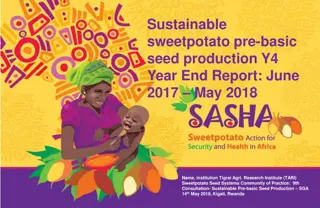Understanding SEED Headers
SEED is an international standard facilitating the exchange of digital seismological data within the earthquake research community. Initially designed for raw earth motion data exchanges, SEED has evolved over the years, with a rich history of developments and practical implementations. It encompasses formats for digital data measured at regular intervals in time and space, allowing for efficient recording, sharing, and archiving of seismic waveform data. SEED's transition to StationXML for metadata and miniSEED for time series data reflects its adaptability and continued relevance in the seismic data domain.
Download Presentation

Please find below an Image/Link to download the presentation.
The content on the website is provided AS IS for your information and personal use only. It may not be sold, licensed, or shared on other websites without obtaining consent from the author.If you encounter any issues during the download, it is possible that the publisher has removed the file from their server.
You are allowed to download the files provided on this website for personal or commercial use, subject to the condition that they are used lawfully. All files are the property of their respective owners.
The content on the website is provided AS IS for your information and personal use only. It may not be sold, licensed, or shared on other websites without obtaining consent from the author.
E N D
Presentation Transcript
What is SEED? SEED is an international standard for the exchange of digital seismological data SEED was designed for use by the earthquake research community, primarily for the exchange between institutions of unprocessed earth motion data SEED is a format for digital data measured at one point in space and at equal intervals of time. Standard for the Exchange of Earthquake Data
SEED History <1985 1985 working group on digital data exchange FDSN (International Federation of Digital Seismograph Networks) 1987 FDSN draft Standard developed by USGS 1988 FDSN Official Release (version 2.0) 1990 Version 2.1 (indexing, improved cross references) 1991 Version 2.2 (dataless SEED) 1992 version 2.3 (miniSEED, FDSN Network Codes) 2004 Version 2.4 (data quality type code) 2012 FDSN StationXML (SEED + more, in XML) IDA, GDSN . IASPEI Commission on Practice SEED is changing from a full SEED file (metadata & miniSEED) to decoupled metadata in StationXML format and time series in miniSEED
SEED in Practice Recordings of digital time series data (seismic waveforms) Exchange of waveform data (Real time, archive) Archiving of digital waveform data (global to local) Storage of metadata information about the data, e.g. station information, sensor End user ( analysis software) Exceptions Not for non-time series data Not for unequal time-interval sampled data (except logs) Parametric data possible (e.g. phase readings) but rarely used; IASPEI Seismic Format QuakeML
SEED: StationXML XML Stands for Extensible Markup Language Designed to transport, carry and store data HTML was designed to display data XML is a markup language much like HTML XML tags are not predefined. You must define your own tags XML is designed to be self-descriptive XML is a W3C Recommendation The purpose of the FDSN Station XML schema is to define an XML representation of the most important and commonly used structures of SEED 2.4 metadata & in the future move to a more flexible metadata representation.
StationXML replacing dataless SEED Mapping between SEED 2.4 dataless SEED volumes this XML schema is possible Simplifying station metadata presentation and adding important details that are lacking in SEED Definitions and usage remain clarified in the SEED manual Schema is a collaborative work between Caltech, IRIS DMC, GFZ, and NEIC and has been adopted by FDSN WG-II
Advantages of StationXML Self Describing data Integration of traditional databases and formats XML documents support all types of data Data presentation modifications; XML style sheets can be used to modify documents or websites without modifying actual data One Server View; data from different databases and multiple servers can be a part of an XML document Internationalization; multilingual documents and Unicode standards are supported by XML Open and extensible; the XML structure is adaptable and can be modified to match specific community needs. Users can add elements when needed Future oriented technology; the W3C has endorsed XML, which is supported by major software providers
Current and next version Current version of StationXML http://www.fdsn.org/xml/station/ Current version SttionXML 1.0 Schema definition Differences between SEED2.4 and StationXML 1.0 StationXML version 1.1 Inclusion of Digital Object Identifiers Versioning of metadata and waveform data JSON output formats




